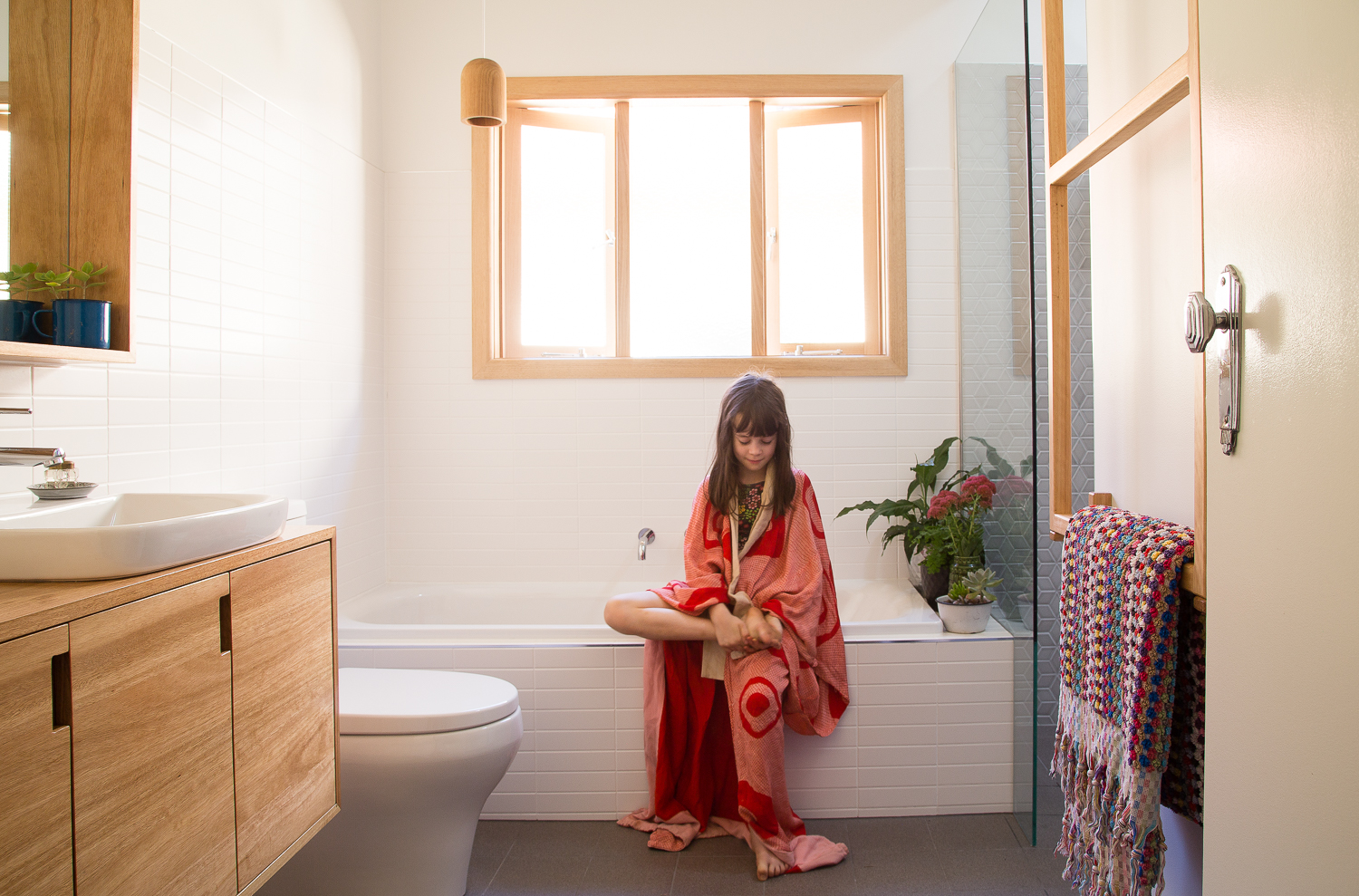The owners of this lovely, modest Yarraville home were tripping over the washing baskets (and each other) in a dim, dysfunctional laundry and old bathroom. Their bulk household supplies were stacked on shelving in front of windows in the laundry, making it feel dark and crowded. They came to Brave New Eco wanting to harness the best layout from the two spaces, whilst allowing for a second shower and toilet.
To provide this solution, two L-shaped spaces were created, locking together in a yin and yang fashion. In the the bathroom a luxuriously large shower nook and wide custom made timber vanity unit ensure that, what is essentially a small room, is easy for more than one person to use at a time. Meanwhile the laundry and extra ensuite were created in the other space, side-tucked neatly into the corner of the complimentary "L", with a shared laboratory-style basin.
Beautiful custom-designed mirrors, a vanity cabinet and towel racks were made by Auld Design combined with some warm details such as locally-made turned timber lights and cabinet handles. The wet areas are now functional, light and lovely.
And how do the owners feel about their new bathroom/laundry solution?
"I love the way you designed the new layout so that there is maximum useful space and lots of light. The combination of timber and grey and white tiles is very peaceful and beautiful and the custom design of the vanity and mirror is spot on. It has lots of nooks and storage. We also love the quirky light fittings. The space is much more functional now, and the surfaces and textures are perfectly suited to their uses like the laundry bench and the smooth floor tiles. I just like to go in and gaze at how beautiful it all is!"- Lucy, Yarraville.
Despite having added an ensuite into the space it seems larger overall, with plenty of full height storage in the laundry for linen and bulk supplies.
All photographs by Emma Byrnes














































